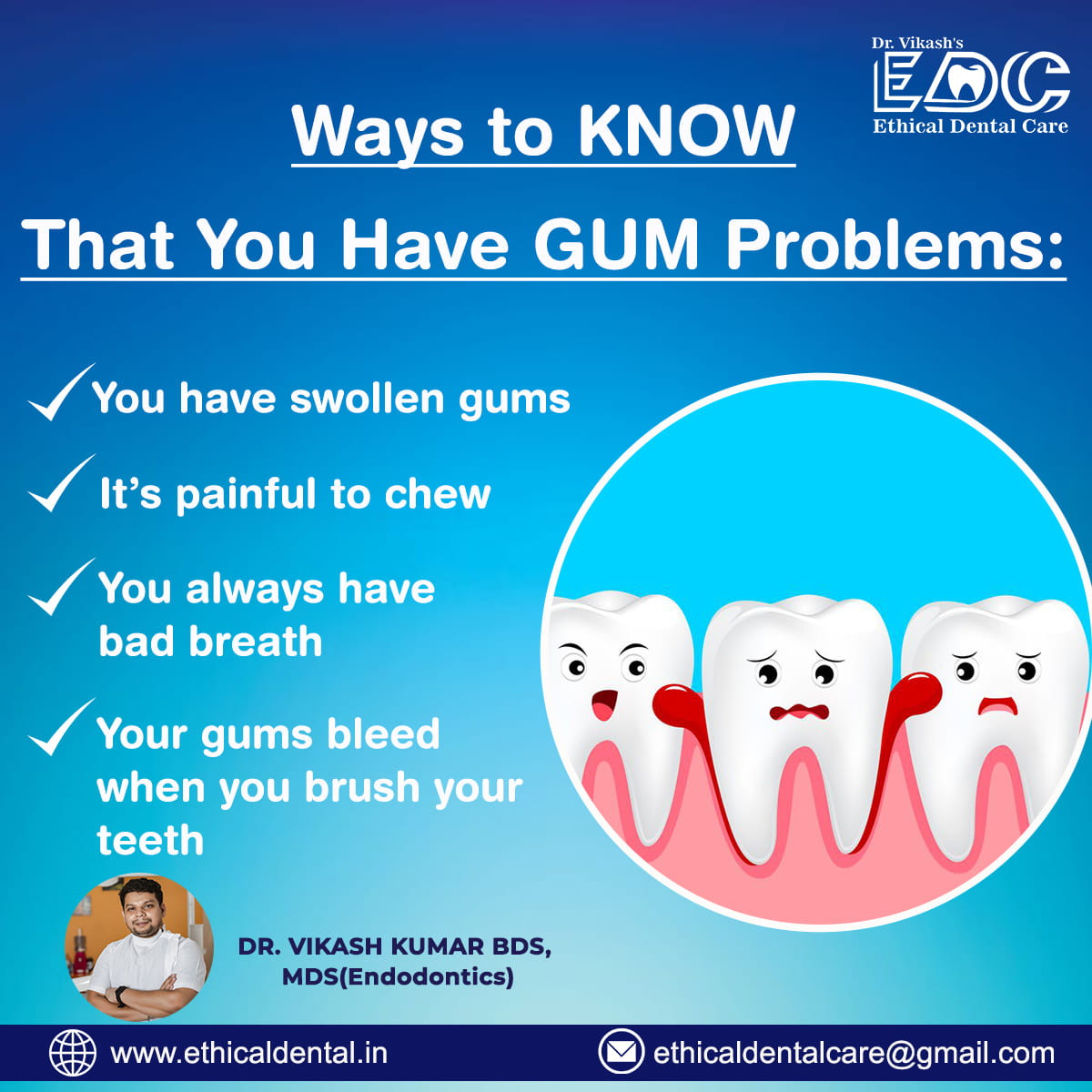
Bleeding gums are one of the most common problems and most common symptom of gum disease. One of the common causes of bleeding gums is Gingivitis.
GINGIVITIS
Gingivitis means inflammation of the gums. It commonly occurs because a sticky film of plaque on which bacteria multiplies, accumulates on the teeth.
Brushing your teeth removes plaque and can prevent you from developing dental caries. But plaque may stay on your gum line, if you don’t brush and floss properly. If plaque isn’t removed it can harden into tartar (calculus), which will increase bleeding. The accumulation of plaque near your gums can also cause gingivitis.
The tartar (calculus) takes up the space between the teeth and gums and causes inflammation, sensitivity and it is a breeding ground for pathogenic (disease causing bacteria).
Gingivitis is a non-destructive type of periodontal disease, but untreated gingivitis can progress to Periodontitis (severe form of Gingivitis). This is more serious and can eventually lead to loss of teeth.
Other causes and risk factors include:
Hormonal changes: puberty, menopause or pregnancy. The gingiva might become more sensitive, raising the risk of inflammation.
Diseases, like Cancer, diabetes, and HIV are linked to a higher risk of gingivitis.
- Medications: Oral health may be affected by some medications, especially if saliva flow is reduced. Anticonvulsant and some anti-angina medications can cause abnormal growth of gum tissue.
- Smoking: Regular smokers more commonly develop gingivitis, compared with non-smokers.
- Age: The risk of gingivitis increases with age.
- Poor diet: A vitamin-C deficiency, for example, is linked to gum disease.
- Family history: Those whose parent or parents have had gingivitis have a higher risk of developing it too. This is thought to be due to the type of bacteria we acquire during our early life.
Signs and Symptoms include:
- Bright red or purple gums
- Tender gums that may be painful to the touch
- Bleeding from the gums when brushing or flossing
- Halitosis or bad breath
- Inflammation or swollen gums
- Receding gums
- Soft gums
Bleeding Gums Treatment
If diagnosis happens early, and if treatment is prompt and proper, gingivitis can be successfully reversed. Treatment involves care by a dental professional, and follow-up procedures carried out by the patient at home.
Professional Dental Care
- Visit your dentist twice per year for professional cleaning.
- Plaque and tartar are removed using an Ultrasonic Scaler, this is known as Scaling.
- Ultrasonic Scaler and tips are used to remove calculus rapidly from the tooth surface. The tip vibrates a t a high frequency and removes the calculus from the surface of teeth and from between the gums and teeth also.
- The Ultrasonic Scalers also create shock waves that disrupt biofilm on your teeth so that the plaque bacteria and calculus can be therapeutically flushed from the teeth by a small jet of water or antibacterial mouthwash which is emitted from near the top of the scaler.
- Scaling removes the sub-gingival calculus, meaning they can remove calculus deposits from just below the gum line, cleaning the surfaces of tooth roots without damaging them.
- Follow-up appointments may be recommended, with more frequent cleanings if necessary.
- Some dental problems, such as crooked teeth, badly fitted crowns or bridges, may make it harder to properly remove plaque and tartar. They may also irritate the gums.
Bleeding Gums Care at home
People are advised to:
- Brush teeth at least twice a day, with soft bristles toothbrush.
- Floss teeth at least once a day, before you brush your teeth
- Regularly rinse mouth with an antiseptic mouthwash, which is also alcohol free.


